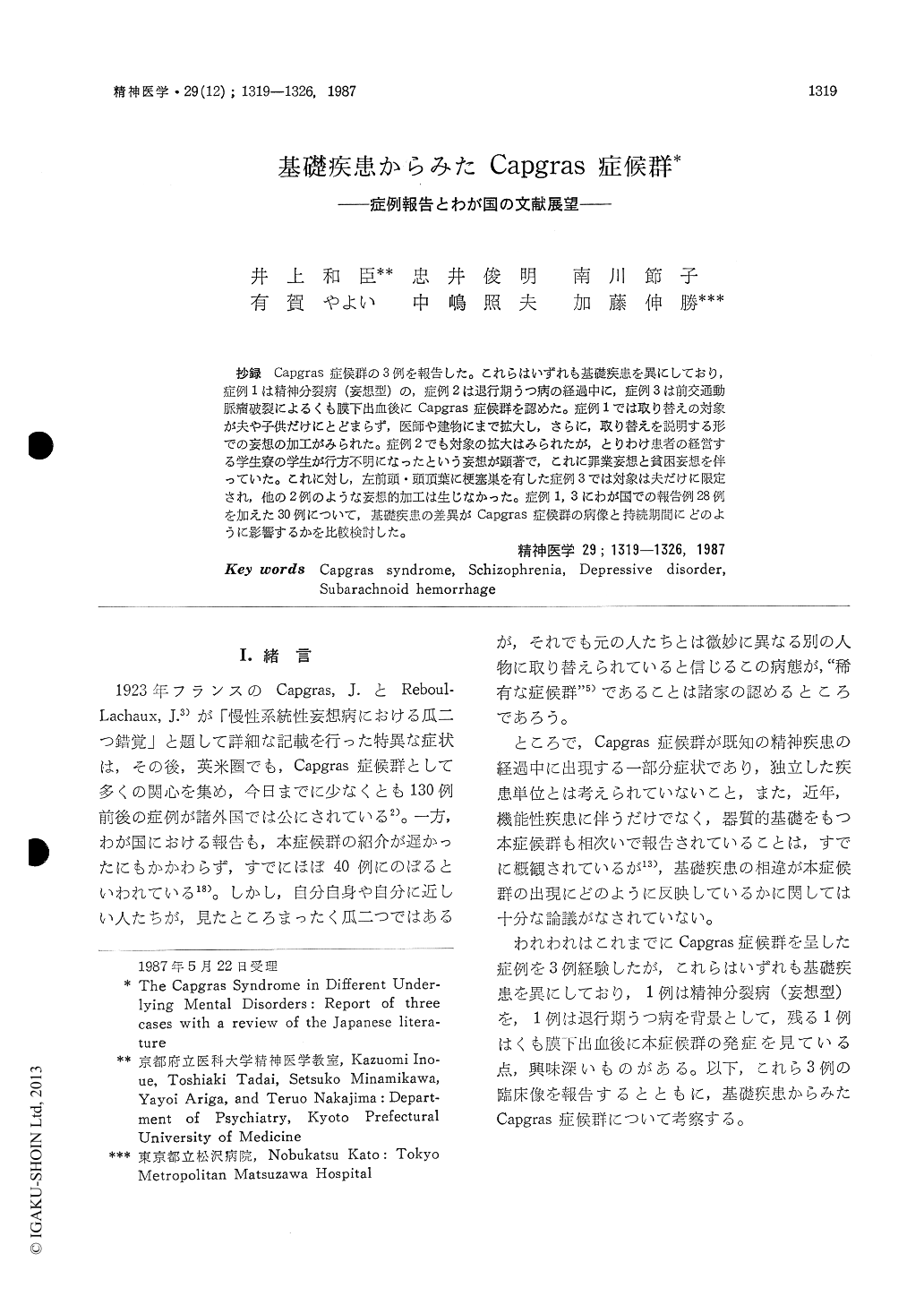Japanese
English
- 有料閲覧
- Abstract 文献概要
- 1ページ目 Look Inside
- サイト内被引用 Cited by
抄録 Capgras症候群の3例を報告した。これらはいずれも基礎疾患を異にしており,症例1は精神分裂病(妄想型)の,症例2は退行期うつ病の経過中に,症例3は前交通動脈瘤破裂によるくも膜下出血後にCapgras症候群を認めた。症例1では取り替えの対象が夫や子供だけにとどまらず,医師や建物にまで拡大し,さらに,取り替えを説明する形での妄想の加工がみられた。症例2でも対象の拡大はみられたが,とりわけ患者の経営する学生寮の学生が行方不明になったという妄想が顕著で,これに罪業妄想と貧困妄想を伴っていた。これに対し,左前頭・頭頂葉に梗塞巣を有した症例3では対象は夫だけに限定され,他の2例のような妄想的加工は生じなかった。症例1,3にわが国での報告例28例を加えた30例について,基礎疾患の差異がCapgras症候群の病像と持続期間にどのように影響するかを比較検討した。
This is a report on three patients with the Capgras syndrome. Patient 1, a woman aged 40 years, developed the syndrome in the course of paranoid schizophrenia. She initially claimed that there were doubles of her husband and children. Several years later the delusional misidentification reemerged, and extended to people other than her family members and even to the hospital itself. In explaining the existence of doubles she stated that her husband was sending these doubles to her and that the doubles were increasing in number by consanguineous marriage.

Copyright © 1987, Igaku-Shoin Ltd. All rights reserved.


